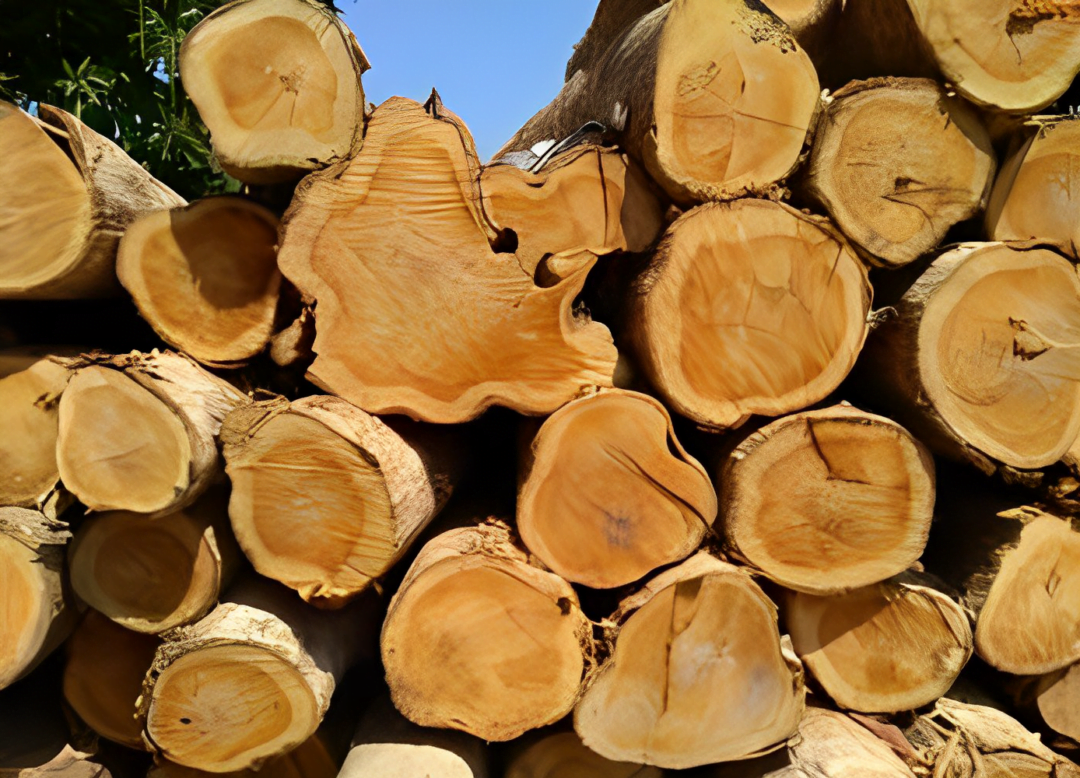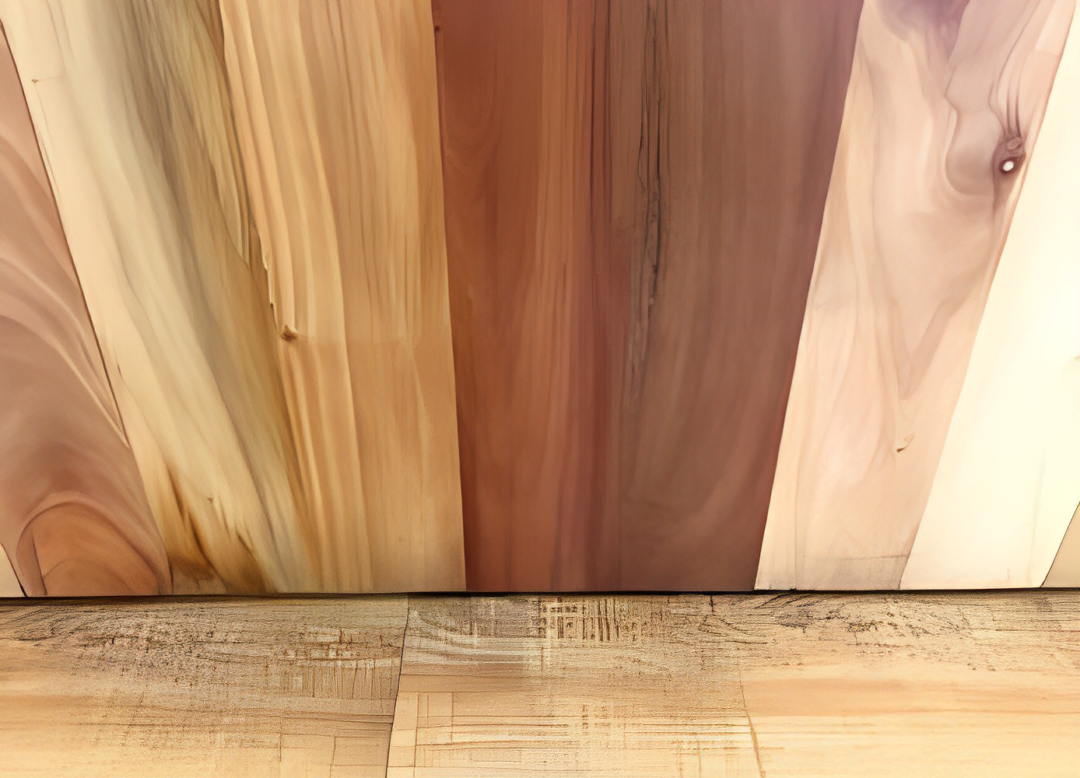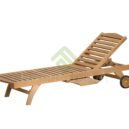What Is the Color of Teak Wood and How It Affects Its Value
Teak wood is prized for its beautiful golden brown color and natural durability. This distinctive hue comes from the wood’s high oil and silica content. However, the color of teak can vary dramatically depending on the quality, age, species, and finishing of the wood.
Understanding what causes these color differences is key to appreciating the true value of teak. For example, the highest grade A teak with a uniform golden tone commands premium pricing. While weathered, graying wood has an aged charm. The natural color changes over time adding character and patina. Whether it fades to a silver grey or remains a warm honey brown, the rich coloration of teak wood contributes to its status as a luxury material.
What Gives Teak Wood Its Signature Golden Brown Color?
The characteristic golden brown hue of premium teak wood comes from its uniquely high natural oil and silica content. These natural substances permeate the cellular structure of the wood, influencing both its color and working properties.

Enriching Oils
Teak contains a complex mixture of aromatic, antioxidant oils that give it a slightly waxy, oily feel. The most abundant oil found in the heartwood is teak oil – a blend of triglycerides and other fatty acids. As the wood cures and ages, these oils undergo chemical transformations. Reacting with oxygen and sunlight, the oils darken and concentrate, intensifying the wood’s honey-gold pigmentation.
Silica Deposits
In addition to oils, teak wood contains an average of over 70% silica. This mineral forms granular deposits within the cellular structures. The presence of silica has several effects:
- Provides structural rigidity and density, for stability and durability
- Adds textural roughness and grain character
- Contributes to natural golden sheen through light refraction
The distribution of silica influences color consistency. Higher-grade teak with uniform golden tones has more evenly dispersed deposits. Lower grades show uneven silica formation, with patchy colors and textures.
Impact on Workability
The oils and silica in teak wood affect more than just appearance – they also influence working properties. The waxy resins help protect and preserve tool edges. However, the abrasive mineral content causes rapid dulling. Overall teak rates as only moderately easy to work using hand or machine tools. Special carbide blades are often recommended for clean cuts and smooth surfaces. Despite being labor-intensive, artisans prize teak for its beauty and longevity.
Grades of Teak Wood and Their Distinct Colors
Teak wood is categorized into quality grades, with each grade exhibiting characteristic colors and grain patterns. These color variations occur naturally based on factors like tree age, growing conditions, and wood location within the tree. Understanding teak grades and associated hue differences allows for selective harvesting and usage based on desired aesthetics and pricing.

Grade A Teak Wood
The highest timber classification, Grade A teak originates from older, slow-growth trees. It possesses a refined, uniform golden brown color, with minimal grain variation. The consistent pale honey tones come from abundant, evenly distributed oil and silica content within mature heartwood. Rare and costly, Grade A teak is enormously popular for fine woodworking, fetching premium prices due to its unparalleled color consistency and workability.
Grade B Teak Wood
Grade B teak offers moderate color variation, in darker beige-brown shades. Containing slightly lower oil concentrations, more diverse pigmentation occurs naturally. Visible grain patterns also emerge – flowing waves or crossed burl grains, bringing added visual interest. Grade B teak has a mix of heartwood and sapwood, and the living tree periphery with paler coloring. Though less uniform in appearance, Grade B teak still offers durability and rich warm hues at an affordable price point.
Grade C Teak Wood
As the lowest commercial timber classification, Grade C teak presents irregular coloration and patchy textures, with mixed sapwood and heartwood. Increased softwood content mixed with mineral streaks and pockets causes mottled color inconsistencies. The heterogeneous patterns and darker tones create rustic appeal. However large sound knots, cracks, and checks may be prevalent. General utilization focuses on structural applications or wood carving blanks rather than fine furnishings. Costs are notably reduced at wholesale.
How Does Teak Wood Color Change Over Time?
The rich golden brown color that makes teak wood so prized is an unstable pigment that changes naturally over time when exposed to sun, rain, and other environmental factors. The degree of color change depends greatly on whether the surface is left unfinished to weather naturally or is finished with protective sealants.
Weathering of Unfinished Teak
Left bare and untreated outdoors, majestic teak will gradually transition to an elegant, pale gray patina over seasons and years of exposure. The blonding effect begins as ultraviolet rays degrade lignin and leach away golden surface oils. Tannins are then slowly released through water penetration, creating subtle gray undertones. Continued rainfalls cause additional moisture to infiltrate deeper cracks and pores, stimulating fungi growth. The resulting black filaments contrast with weathered wood cells to produce attractive black patterning.
However, unchecked weathering can cause undesirable drying cracks, checks, and warping across the grain. Once degraded, the original glowing tones can’t be restored. But many prizes the rustic, timeworn appearance of weathered teak above newer counterparts.
Color Retention With Finishing
While oils, varnish, and other surface treatments can’t prevent patination entirely, they significantly slow the silvering process. Pigmented finishes like stains or paints also preserve the saturated golden hue longer term. Penetrating finishes absorb into cell pores rather than caking on the surface, offering moisture resistance without limiting wood respiration. Periodic refinishing helps counteract erosion from sun and rain contact.
However, film-building finishes may eventually blister, crack, or peel – requiring more frequent sanding and reapplication. And moisture trapped below the coating can lead to mildew formation. Choosing a high-quality marine grade finish formulated for durability is advised to maintain rich coloration with less upkeep.
With the right protective approach, the prized honey tones of teak wood can persist for years before gradually fading to a stately silver reminiscent of a treasured artifact.
Teak Wood Species and Color Variability
While over 70 species of trees belong to the teak family, commercial timber production focuses on three related varieties exhibiting unique wood grain colors and patterns.
Tectona Grandis
By far the most prevalent teak species, Tectona grandis comprises over 90% of global teak stocks and trade. Native to tropical forests from India to Indonesia, it possesses all the most desirable working properties and aesthetic qualities. Tectona grandis features a straight grain with an oily smooth texture, in consistent golden to dark brown tones. Color derives from the high natural oil content, enhancing both moisture protection and dimensional stability. The combination of strength, beauty, and durability makes T. grandis ideal for shipbuilding, veneers, furniture, and outdoor uses.
Tectona Hamiltoniana
Occurring in more isolated forest pockets, Tectona hamiltoniana is rarer than T. grandis, producing limited yields. Fairly fast growing, it contains zoysia – a unique type of oil that penetrates rapidly for quick curing. Grain patterns tend towards irregular waves or curls. While sapwood is a pale beige, the heartwood is often darker grey-brown in color compared to other teak relatives. Working properties are favorable, though brittle segments and crushing may occur. Overall an excellent durable hardwood for specialty applications.
Tectona Philippinensis
As the name indicates, Tectona philippinensis grows prolifically in the Philippine Islands. Unfortunately logging has endangered natural stands due to high demand. Its cut timber reveals contrasting multicolored streaks from medullary rays. While the decorativeness of curly, burled grains is valued for veneers, the color variation reduces suitability for fine furnishings. T. phillipinensis also has excellent insect and water resistance. Custom projects allow the unique figure and mottled hues to enhance natural rustic beauty.
Enhancing and Altering Teak Wood Color
While teak offers a naturally attractive range of golden brown tones, the coloration can also be modified easily through various finishing techniques:
Stains
- Pigmented and dye stains produce darker wood tones
- Bleaching removes tannins to lighten color
- Multiple layers and methods allow for custom effects
Paints & Solid Coatings
- Opaque paints cover wood tones and grain
- Can match to other wood species’ colors
- Lacquers, varnishes, and oils offer degrees of protection
Physical Distressing
- Wire brushing and abrasives expose lighter wood cells
- Natural weathering grays surface
- Allows patina to develop without replacement
Careful consideration of intended service environments and aesthetics helps tailor color change approaches. Proper preparation and finish application preserve beauty and function for years of use and enjoyment.
Artistic Uses for Teak Wood Color
The rich, warm golden tones of teak wood lend themselves beautifully to artistic and decorative creations. Beyond utilitarian applications, the alluring coloration has served as inspiration across cultures for exquisite art forms and statement pieces.
Complementary Contrasts
Teak wood’s honey-hued canvas provides the perfect background to showcase other materials. Metallic accents like steel, iron, brass, copper, and chrome pop against the somber base. The interplay of light and dark creates eye-catching vignettes. Cool stones like marble, granite, slate, or quartz form alluring color combos. Teak can also coordinate with leather, cloth, ceramic, glass, and thatch in vibrant living spaces.
Sculptural Statements
Sculptors embrace teak for its flexible working properties and sheer beauty. The natural oils enable smooth curves and artistic expression. Flowing grain patterns come alive under gifted hands. Some artisans highlight the original luminous tones with clear finishes. Others employ dyes, inks, or oxidizing treatments to further accentuate nature’s textures. The matte luster and muted color provide distinction without overwhelming accompanying elements.
Cultural Allure
In various Asian civilizations, master craftsmen transform golden teak into ornate furnishings and architectural details. Intricate wood carving styles like Ajrakh in India or Jepara in Indonesia use color variation and grain to decorate palaces, worship spaces, and homes of nobility and deities. The warm, earthy appeal elicits sentiments of comfort and wellbeing. Teak remains synonymous with luxury across continents and centuries through reverential craftsmanship of aesthetically divine pieces.
Cultural History of Teak Wood Color
For thousands of years spanning diverse cultures, the signature golden brown coloration of teak has rendered it precious beyond a pragmatic building material.
Ancient Adoration
Ancient Chinese texts reference teak as early as 400 A.D. The central Indian Gupta Empire prized durable teak for monumental structures circa 300-600 A.D. Egyptians may have imported the exotic wood as early as 2600 B.C. for pharaohic boats and furniture. Kings flaunted elaborate teak thrones and four-poster beds as the height of prestige.
Nautical Necessity
By the 7th century A.D., demand from Indian Ocean and Persian Gulf shipyards soared. Teak’s natural oils providing moisture resistance and dimensional stability proved ideal for vessel framing, decks, and detailing. Even today, the U.S. Navy specifies Mil-Spec teak for onboard applications. Yacht builders and owners covet the beautiful wood for decking and interior paneling.
Hallmark of Nobility
The rich yet subtle coloration, intriguing grain patterns, and warm luster make teak a universal emblem of affluence. Maharajas and moguls displayed sumptuous teak furnishings as a nod to cultivated taste. British Colonial plantation models fueled economic control of Burmese resources. Today high-end hotels, restaurants, corporate headquarters, and luxury estates proudly integrate golden teak accents to convey success and sensibility.
The highly prized golden brown color of premium teak wood arises from unique natural oil and silica deposits. Varying concentrations generate distinctive grades and species exhibiting signature colors and grains. Hues evolve over time through weathering and finishing effects for custom patinas. The artistic warmth and cultural history imbue additional meaning to teak wood’s enduring beauty and value.


